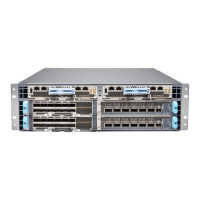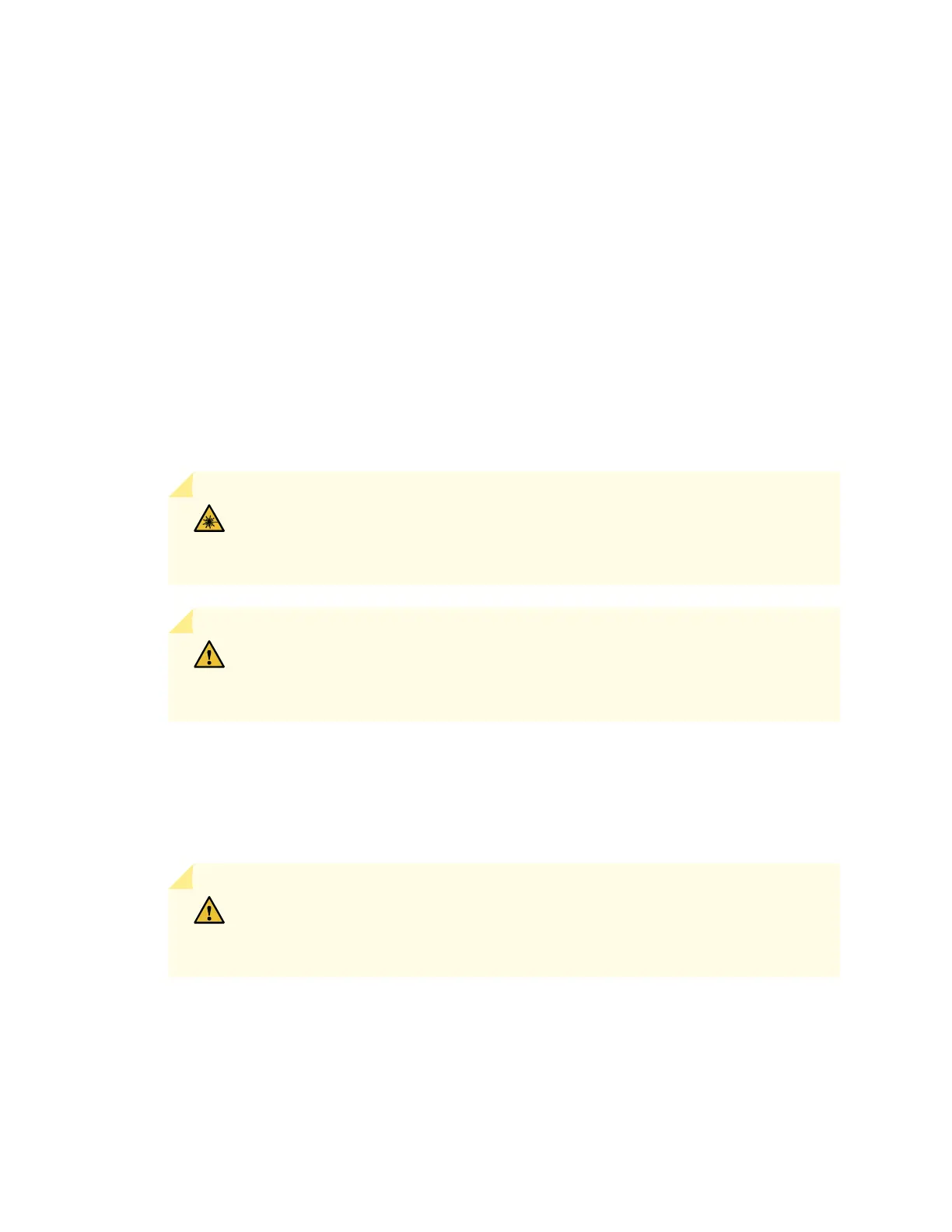Remove a QSFP28 Transceiver
To remove a QSFP28 transceiver (see Figure 54 on page 161):
1. Place an electrostatic bag or antistatic mat on a flat, stable surface to receive the QSFP28 transceiver.
Have ready a rubber safety cap for the QSFP28 transceiver and the cable.
2. Wrap and fasten one end of the ESD grounding strap around your bare wrist, and connect the other
end of the strap to the ESD point on the chassis.
3. Label the cable connected to the QSFP28 transceiver so that you can later reconnect the cable to the
correct QSFP28 transceiver.
4. Disconnect the cable from the transceiver. Immediately cover the transceiver and the end of the cable
with a rubber safety cap.
WARNING: Do not look directly into a fiber-optic transceiver or into the ends of
fiber-optic cables. Fiber-optic transceivers and fiber-optic cable connected to a
transceiver emit laser light that can damage your eyes.
CAUTION: Do not leave a fiber-optic transceiver uncovered except when inserting
or removing a cable. The safety cap keeps the port clean and prevents accidental
exposure to laser light.
5. Arrange the cable in the cable management system to prevent it from dislodging or developing stress
points. Secure the cable so that it does not support its own weight as it hangs to the floor. Place excess
cable out of the way in a neatly coiled loop in the cable management system. Placing fasteners on the
loop helps to maintain its shape.
CAUTION: Avoid bending the fiber-optic cable beyond its minimum bend radius.
An arc smaller than a few inches in diameter can damage the cable and cause
problems that are difficult to diagnose.
6. Pull the transceiver’s rubber handle straight back. The locking pins on the transceiver automatically
releases the transceiver. Place the transceiver on the antistatic mat or in the electrostatic bag.
160

